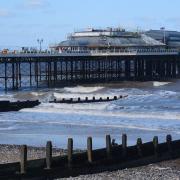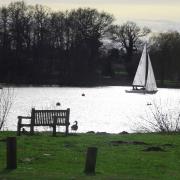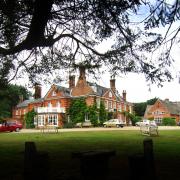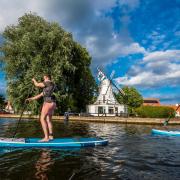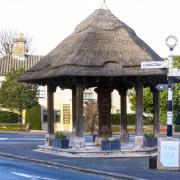Norfolk’s coast is renowned for its beaches, wildlife, saltmarshes, quaint villages and seaside resorts.
It is also full of so many wonders stretching back through millions of years that it has become known as the Deep History Coast.
The name was devised by historian John Davies and palaeontologist David Waterhouse, who have turned a trip to the seaside into a journey back two million years with their awe-inspiring new book.
It explores the incredible geology, archaeology, wildlife and scenery of the Norfolk coast. See evidence of ice ages, meet pioneering Victorian fossil collectors, visit Roman forts and Victorian resorts, taste the cuisine of the sea, find mammoths and Neanderthals, and plunge into deep history.
Authors John Davies and David Waterhouse came up with the term Deep History Coast in 2014, inspired by the way the term ‘prehistory’ for our most distant past, was being recast as ‘deep history.’

Highlighting the work of Norfolk Museums Service and the immense importance of our 100-mile shoreline in human history they turn decades of research and discovery into a tour of the coast from its formation to the present day and from Pakefield all the way round to the Wash west of King’s Lynn.
John was chief curator and keeper of archaeology for Norfolk Museums Service and in charge of the project to restore Norwich’s castle keep to its Norman heyday before he retired. David is a paleontologist and evolutionary biologist. He was senior curator of natural history and geology for Norfolk Museums Service and is now curator of the Scott Polar Institute in Cambridge. He is also an artist and created illustrations for the book and its front cover.
John and David put much of the book together during the pandemic, writing for anyone interested in the Norfolk coast, whether a local or visitor, scientist, historian, walker or wildlife-watcher.
And do they have their own favourite parts of the deep history coast?
John said favourite experiences while researching the book included seeing a Hunstanton sunset, watching thousands of wading birds take flight from Snettisham as an early morning high tide rolled in, and walking across the chalk exposed by a low tide at Sidestrand.

David particularly loves West Runton and Happisburgh. ‘At Happisburgh I was privileged to work excavating the oldest and largest archaeological site in Northern Europe,’ he said. ‘During my time there 80 or so stone tools were found, dating to nearly a million years ago.
‘And West Runton because it is where the largest and oldest mammoth ever discovered in the UK was found,’ said David. ‘I loved giving tours of the stores housing it as well as giving talks about the amazing landscape, flora and flora that it lived in and alongside.’
Exploring Norfolk’s Deep Coast History has been called ‘fascinating and illuminating’ by scientist and televison presenter Alice Roberts, who said: ‘This book takes you on a trip to the seaside and back into the depths of the Ice Age, walking in the steps of our distant ancestors.’
Exploring Norfolk’s Deep History Coast by John Davies and David Waterhouse, is published by The History Press

Eight amazing facts from Exploring Norfolk’s Deep History Coast:
Norfolk is the only part of Britain that evidence for four species of humans has been found.
Fossilised footprints show people were walking around the Happisburgh area almost a million years ago. It became the oldest archaeological site in northern Europe.
The mammoth discovered at West Runton is the largest and oldest and most complete ever found in Britain.
Much of Norfolk rests on the skeletons of billions of tiny plankton - which went on to form chalk.
Our famous flints were made from the skeletal parts of ancient sea sponges. The silica dissolved in seawater and solidified into flints.
Norfolk is in the newest and lowest part of Britain – with the fastest receding coastline.
People once lived on Doggerland, between Norfolk and the Netherlands, now covered by the North Sea.
Native Norfolk wildlife half a million years ago included lions, wolves, bears, rhinos and mammoths.












